How to get backlinks in 2024 (10 easy ways)
You might be aware that backlinks play a crucial role in search engine optimization (SEO) and ranking. You should have a strong backlink strategy that suits your website to increase your search engine traffic.
But what exactly is a backlink, and why is it so important? Backlinks are a simple concept: when another website links to your website, that link is considered a backlink. Search engines assess backlinks to determine the popularity of a website and rank it accordingly.
Based on its reputation, history, and authority in the niche, each backlink is given a certain amount of “juice.” Backlinks from reputable and legitimate websites are more effective than low-quality backlinks from websites with no credibility.
So, you need backlinks if you want to rank for competitive keywords. That’s why I have wrote this guide, which includes:
- The 3 Types Of Content That Gets The Most Backlinks
- 7 Best Ways How To Get Backlinks in 2024
Everyone is giving rubbish advice about getting backlinks
It’s 2024, and things have changed a lot. Ranking high in Google used to be easy for new websites, but it isn’t anymore. Why? Because you need a lot of backlinks. You could write the best article in the world, but it won’t make any difference if you don’t have backlinks. It’s a shame because great content should come first.
Now, most websites go on about how to get backlinks. They tell you to buy them, to guest blog, and to do all these things that take too much time and cost too much money.
As far as I see it, if you want backlinks, there is only one way to go. That is to create viral content. You see, if you write the best article on website optimization, then submit it to social media and buy a press release, it won’t get any traction; however, if you write a newsworthy article, such as the 100 richest internet billionaires. That is something that will get traction, and traction is what you need to get links. When you submit it for a press release, you will get attention; now you get those links you crave.
The only issue is, what’s this traffic worth? Well, that’s a fair question to ask. It’s not exactly targeted traffic, and a key phrase that is worth a lot of money. The benefits are as follows and often overlooked:
- Links to one page, lift all pages on your website.
- Interlinking well in your article will bring backlinks to several pages (go ahead and visit my billionaire’s article; it has a lot of interlinks).
- Credibility.
- Builds your email list and social media following so that you are able to send visitors back to your website time and again.
So, if you are a new website owner or a struggling blogger, the first thing I recommend is that you write a series of top-list articles and interlink them. Then, buy press releases and content syndication.
That is how you get lots of backlinks for a very low price, which means getting backlinks is profitable. Buying individual links to articles is not profitable for small websites. As far as I know, it only works for big sites.
Now, the rest of the article is going to discuss how to get backlinks from various sources. You could read it—it’s quite good—but I have just told you basically everything you need to know.
The 3 Types Of Content That Gets The Most Backlinks
The best way to get backlinks is to focus all your effort on content creation. After all, it’s content that another website will link to. I regard this as a passive backlink building technique. By that I mean, once you create great content, other websites will discover it and link to it without you having to go out and get those links yourself.
The three best types of content that gets backlinks and social media shares are as follows:
Top list articles
We were the first famous website for top-list articles. We constantly wrote them and always recommended our readers create them. They are easy to skim and tell you precisely what you are going to get with the headline. Those featured in top lists often link back to you, share the article on social media, and rank high in Google because they get so many links.
If you were going to do only one thing this week to get more backlinks, I recommend that it was to create a top list.
Our most successful ones are our top earn websites and richest internet billionaires.
I go into a lot more detail about this strategy in this article.
If you want a great tool to automatically create ready-to-publish content for you, consider using ContentShake AI (by SEMrush). If one of the world’s largest SEO companies made it, it must be good for getting traffic and links!
Ultimate guides
The biggest websites know that to rank high in Google, you must also link to similar content in that article. Writing ultimate guides on various topics makes it easy for websites to offer you links. An example of an ultimate guide is our blog post about SEO or making money from a website.
Interviews
Interviews make great content and are helpful for internal linking. A great example is our interviews with Stanley Tang (DoorDash) and Craig Newmark (Craigslist). Every time we mention one of these companies or their founders, we use it as an opportunity to link to them.
7 Best Ways How To Get Backlinks in 2024
Here are 5 ways to get easy backlinks to help rank your website for your target keywords:
1. Ask for backlinks
The easiest way to get links to your website is to ask other websites to link to you. The easiest way to get targeted backlinks to an article is to go to Google or SEMrush and type in a search term for which you want to rank high in search engines.
Next, take this website URL, go to the SEMrush backlink tool, and look at what websites are linking to it. Now contact each website and ask nicely either to add your link or tell them you have a better, more modern article they should link to instead.
This strategy works surprisingly well.
2. Testimonials
You can easily leverage testimonials into backlinking opportunities online. Whenever you buy a new product, service, membership, or anything else online, leave a testimonial. Testimonials will commonly have a link to your website within them to prove the testmonial is real. This will give you a free backlink if the company likes your testimonial and uses it on their website. And — it doesn’t hurt to ask them to put a live link in the testimonial!
Pro Tip: Leave honest and real testimonials (they’ll get used more).
3. Press releases
Contrary to popular belief, you don’t have to be a public relations expert to run a successful press release. You can have a press release written and distributed to thousands of different news sites and publications without doing any ‘real’ work. I love press releases because you get HIGH quality backlinks and your business gets put in front of readers, not a bad deal! Websites like the New York Times and USA Today can pick up your press release giving you a gem of a backlink (and a ton of free traffic). Though we will say that your press release better be high quality if you want to get on one of those sites!
Submitting a press release to all of these news sites manually would be a huge hassle. To avoid wasting our time, we use a distribution service offered by FatJoe, which writes and submits our press releases for us. FatJoe has an extremely strong track record and comes highly recommended by most search engine optimizers.
4. Content syndication
Content syndication, also known as content distribution, is the process of taking valuable content, such as a blog post or link placement and republishing it on other relevant media platforms and news sites. This strategy is popular among publications, allowing them to provide their target audience with fresh content quickly.
Additionally, content syndication can be a highly beneficial link-building strategy for your website. Each time your website content is republished on another website, the source is credited with a link, strengthening the backlink profile and helping improve search engine rankings. Furthermore, syndicated content can drive relevant traffic to your site and boost lead generation by reaching a wider audience through a content syndication network.
We have used this technique to get millions of visitors and thousands of links to articles we have written. If you want someone else to contact news sites and high-traffic websites for you, FatJoe offers a service for this.
5. Guest blogging
There’s a myth that goes something like this: “guest blogging is dead.” It isn’t, but if you want to pass up on great backlinks you can believe that. Article marketing is one of the most effective forms of link building I use daily. I have websites ranked in the #1 position for their primary keywords JUST from guest blogging, so don’t try to tell me it doesn’t work!
When guest posts, it’s important to provide value to your readers. Several types of content that bloggers love are:
How-to guides are a great way to walk your readers through a process, give them actionable steps, and help them solve problems.
Reviews can also be helpful, but only if you choose the right place and audience to publish them. Be honest with your readers and mention any flaws or issues with the product or service you are reviewing.
Quote posts are another way to provide value to your audience. Choose a topic that interests them and cite influencers in that field. People love reading quotes as they inspire and motivate action.
Checklists are useful tools for sharing key points with readers and making it easier for them to take action.
Lists are also popular among readers as they feature useful information or resources. Infographics are a great way to present data and facts visually, making them easier for readers to understand.
Case studies are practical, easy to scan and take action on, and provide insights into specific projects or processes.
Interviews with influencers provide readers with valuable information and increase the chances of your content being accepted for publishing.
6. Get backlinks from holding awards
Holding some type of annual awards can generate a lot of buzz and backlinks for your website. To do this (successfully) you do need SOME level of credibility in your industry, though. Create awards for the best in your industry and give them to the ones that are crushing it. These are usually the most popular and followed people, so you can really leverage their popularity to grow your website. I’ve seen this used very effectively in the fitness industry — people can’t resist sharing with their friends that they have won an award — even if you just made it up on the spot 🙂
This can do a couple things for you:
- Bring in new readers, fans, and followers (because its fun & different)
- Attract those ‘big name’ winners and potentially get links, tweets, or mentions from them
- Build rapport for your brand/company/website
These 5 methods alone can rank your website for competitive terms if used correctly, so use them! Experiment to find out what works best for your website and keep doing more of it. You should always be testing new and creative link building methods to keep things fresh and organic for the search engines.
7. Buying backlinks
When I say buy backlinks, I’m talking about genuine, natural links, not spam links.
This must be the most popular way to get links in 2024 because it’s now quite low cost and of course, the easiest method. By using a Linkbuilding service such as FatJoe, you sit back and they get the links for you.
I think it’s unfortunate that it’s so easy because it means a lot of people get high rankings for rubbish content and then those who create great content often get lower search engine rankings because they never bought links.
If you are against buying backlinks, ask yourself one question, what would number 1 in Google make you in return?
How to see how many backlinks a website or page has
There are many benefits to knowing how many backlinks a website or page has. I will list some of them below:
- It makes it easy to see how many links are required to compete with another article or page in Google.
- It makes it easy to see who is linking to your competitor, so you can contact them to ask them to link to you.
- It tells you how valuable a page on your website is so you can decide whether to continue working on it or give up. I often check a page’s backlinks when deciding whether to delete or update content.
To check backlinks, SEMrush offers ten daily backlink checks for free.
What you need to know about link building in 2024
We are firm believers in natural linking – in other words, we never ask for links and we regularly place external links on our website that takes our visitors to valuable content related to our subject. (These external links are not requested and we give them freely).
It is not rocket science – but the more valuable and helpful your content is, the more links you will get!
SEO at its best is working with the search engines to deliver your content to them in a format that makes their task of indexing your website easier. That said, just about everyone agrees that the more natural links you receive – the better your search engine ranking.
Building Links That Drive Traffic without the SEO Risks
Link building is an integral part of every successful SEO strategy.
To modern search engines, backlinks are more than just the conduits that interconnect pages around the web. They’re also viewed as votes of confidence that help search engines decide which sites to trust and prioritize. The more links you have and the higher the quality of the sources, the greater your site’s ranking power becomes.
Of course, talking about the value of links is a lot easier than actually building them. Finding relevant and reputable sites that will make good link sources is one thing – convincing the webmasters that control them to link to your site is quite another.
And while gaining links generally does good things to your site, there are SEO Risks associated with over-optimization. Google and other search engines have algorithmic and manual measures in place to flag webmasters who try to game their systems. Sites caught amassing unnatural links from low-quality sites can find their search rankings abruptly dropping, leading to sharp declines in organic traffic.
In this guide, we’ll discuss how you can find, qualify and obtain links that help your SEO without creating SEO Risks that result in penalties. We’ll also talk about ways to quantify the impact of your link acquisition so you can justify the time and effort spent in pursuing link acquisition opportunities.
Taking the Risk Out Of SEO – What Factors that Make a Link Good or Bad?
Modern search engines favor sites that have good amounts of natural backlinks emanating from trustworthy sites. Conversely, they look at sites with suspicion when they detect abnormally high numbers of links pointing to them from shady websites.
Knowing how to tell one from the other can spell the difference between a successful SEO campaign and an outright failure. Here are the things you have to consider when looking at a potential link source for your site:
=> Type of Link
There are a few different reasons why webmasters link.
It could be for navigational purposes to help users find their ways through a site.
It could also be commercially motivated, as seen in banner ads and affiliate links.
However, as far as SEO is concerned, the best links are those of the editorial variety.
These are links that webmasters use to reference information sources on other pages or websites. The target pages are usually topically related to the linking page and are good sources of data on a subject matter.
Editorial links are given and not paid for.
They’re usually mentioned within a page’s HTML body and are contextually suggestive of what the reader will find in the pages they point to. Search engines usually place more weight on these links compared to those that are in the header, sidebar, and footer areas which are usually used to display links to advertisers.
=> Trust and Authority
A site’s trustworthiness and perceived authority on a subject is an important factor in how much Google and other search engines feature it on search results. Primarily a function of inbound links and brand mentions, the “old” way of gauging a site’s authority was through Google’s PageRank metric. PageRank assigns a value to sites on a scale of 0-10. The higher the PageRank, the greater the site’s ranking power.
PageRank information was once readily available through Google’s own PageRank Checker tool.
Several years ago, you could just pop a URL into the tool and it will give you the page’s PageRank rating.
However, Google stopped updating PageRank results, forcing SEO practitioners to rely more on similar metrics such as Moz’s domain authority and Majestic’s Citation Flow. These KPIs allow link builders to see which sites are likely to pass the most potent kind of link equity.
Aside from raw link-based authority metrics, the type of root domain that a site is built on also matters. Google and other search engines are also biased towards government, educational institutions, and big brand sites. Anytime you can get editorial links from .gov, .edu and major commercial sites, it’s a great day for your SEO campaign.
Conversely, links that come from low-authority sites will barely matter in your quest to gain better rankings. While it’s normal to have some low-quality sites linking to your site’s pages is normal, having too many of them in your link profile could end up harming your rankings. Make sure that your time, energy and resources are spent on acquiring links from mid to high-authority sites.
- Topical Relevance – Links that help your search visibility can’t just be from sites with good levels of authority – they also have to come from sites that talk about topics related to your own content’s theme. Getting a link from Apple’s main site might carry a lot of authority, but if your site represents a local fruit stand in the Midwest, the link won’t help as much as a link from WHFoods.com, which genuinely talks about apple the fruit, not Apple the company.
- Geographic Proximity – Search engines don’t just consider content relationships and authority – geographic proximity is also a factor in what makes a good link. It’s only natural for a shoe retailer in the UK to get most of its links from the country. If it gets too many links from China or Russia, search engines may get suspicious and conduct a manual review of the site’s link profile to see how these links are being acquired.
When building links, start by looking at sites within your own city, state, and country. These links will matter more in helping you rank for search results within the area where your target market lives.
- Audience and Clickability – The days of links just being bridges for users and conduits of link equity is done. These days, engagement also matters much in how valuable a link is perceived to be. The more that a link is used by a site’s readers, the more its placement is justified and the stronger the signals it sends to search engines.
Take advantage of this by pursuing link opportunities from sites with legitimate user bases. This allows you to channel not just ranking power to your site, but to drive valuable referral traffic as well. The higher the linking site’s engagement metrics are and the more the link to your site serves a purpose, the greater its contribution to your SEO campaign.
Conversely, avoid sites that seem to have been built just for farming content and linking to other sites. These sites usually don’t have active readers who’ll click on the links on its pages. They’re pretty easy to spot as you’ll see a low comment, social sharing and Alexa ranking stats from them. Over time, these links are the types whose values would fade and weaken.
- Position on the Page – Links on pages don’t carry the same ranking power even when they’re all in the body section. The position of a link in the body also affects how potent it is. Links that are placed above the fold (the area of the page immediately visible when the page loads) yield the most SEO value while links near the bottom of the body pass the least equity. Here’s an example of an above-the-fold link:
When you’re building links, see whether the articles on a potential partner site contain links that are above the fold. Ask the webmaster if it’s okay for you to get a link to your site in these parts of his pages or better yet, read their site guidelines to see if they have existing policies on the matter.
- The Nofollow Attribute – In 2005, the rel=nofollow link attribute was introduced to allow webmasters to link to pages they didn’t want to pass link equity to. Cases when this attribute can be legitimately used include banner ads and affiliate links. When pursuing links, be aware that getting a nofollow link will not directly help improve your site’s search visibility. The only thing the link will do for you is pass along some referral traffic and introduce your site to new users.
As much as possible, try and get links from sites that allow links without nofollow tags. However, if you don’t mind missing out on link equity and exposure is good enough for you, don’t let this stop you.
- Anchor Text – A link’s anchor text helps search engines understand what type of content that the link is referencing. If the anchor text is suggestive of what the user will find at the destination page, the link becomes more potent for SEO. Therefore, it’s generally accepted that a string of words that includes your target keyword makes for the most SEO traction.
However, don’t overdo your optimization of anchor text. Using exact match anchor text is an invitation to Google’s Penguin penalty. You can include keywords in your anchor text as long as you mix it with other words and make sure it’s within the contextual flow of the content’s discussion.
- IP Uniqueness – A potent link profile needs links to come from a diverse array of websites. Therefore, links shouldn’t mainly come from sites that share the same IP addresses. This is a dead giveaway that a site’s links are coming from just one true source – a sign that may be interpreted as an attempt to fool its algorithms through participation in link schemes.
You can check your prospect sites’ IP addresses easily with this tool.
Ethical Link Building Strategies Without The SEO Risks
Link building can be done in a variety of ways. It’s an aspect of SEO where you can get really creative. In theory, the best way to gain links is through the merit of your content. Websites with compelling content attract natural links from relevant sites. This route is by far the safest and most natural way to gain links.
Unfortunately, not everyone has the skills, patience, and luck to make it work this way.
In practice, getting links by virtue of a strong content library can be very tough. Unless you have truly unique content assets that are far more compelling than anyone else’s. the chances of standing out are slim to none. In cases like this, you can consider taking a more proactive approach towards link building while still abiding by the search engines’ rules. In this post, we’ll focus on two of the most reliable white hat link-building methods: guest posting and resource page link building.
As the name suggests, guest posting involves the contribution of articles or Infographics to blogs that cover topics directly or closely related to your niche. If the webmaster accepts and publishes a writer’s work. The writer is rewarded with a link to his own site along with an author bio that talks about him and his business.
Resource page link building, on the other hand, involves finding web pages that list information resources relevant to their content themes. The link builder then contacts the webmaster and suggests his site for inclusion by pointing to link-worthy content in it.
Both methods are ethical, scalable, and highly effective when done right. The first crucial step is finding sites that are both topically relevant and are showing signs that they’ll be willing to link to sites like yours. The next one is convincing them that they should give your link a place within their pages.
We’ll cover both these steps in the succeeding sections but something else to emphasize here is that you are not looking for Unnatural Links. An unnatural link according to Google is “creating links that weren’t editorially placed or vouched for by the site’s owner on a page, otherwise known as unnatural links, can be considered a violation of our guidelines.”
We shall assume for the purpose of this article that you only want to attract Natural Links – but for more clarity on unnatural links this article is excellent.
How To Avoid SEO Risks In Your Link Prospecting Process
Prospecting is one of the most work-intensive parts of link building. Several years ago, link builders had to manually scour the web for viable link sources. These days, a combination of powerful tools and specialized techniques allows link builders to find, analyze and qualify websites by the bulk. Here’s what you’ll need to get started:
- Google’s Chrome browser
- The SEOQuake plugin
- Microsoft Excel
- NetPeak Checker (optional)
Step 1: Adjust Your Google Search Settings
The first thing you need to do is go to your browser and tweak your Google search settings. Under Google Instant predictions, select the option to never display Google Instant results.
Under results Per Page, move the cursor to the extreme right and set it at 100.
These tweaks allow you to display 100 search results on Google at a time. More on why that’s important later.
Step 2: Run Special Queries Using Search Operators
The next step is to run some searches that will yield just the kind of sites that make good link prospects. To laser-focus our searches, we need to use special commands called search operators. These strings of text limit search results displayed to just the listings that contain words that indicate topical relevance and willingness to link. Below are some popular search operators for finding guest blogging and forum link building targets:
For Finding Guest blog Guest Blogging Opportunities
- “Keyword” + “guest post”
- “keyword” + “write for us”
- Intitle:keyword “write for us”
- Intitle:keyword “guest article”
- Intitle:keyword “write for us”
Let’s see how these queries work. Suppose you’re building links for a site that sells used car parts. You can insert that keyword into any of these queries and get a lot of possible link prospects. In this example, let’s use the search operator “keyword” + “write for us.”
These are just three of the 60+ pages that we saw with this keyword and search operator combination. The query seems to be on point as we inspected the first few ones more closely:
++++++++
For Finding Resource Page Linking Opportunities
- “Keyword” “resources”
- “Keyword” “related resources”
- “Keyword” “related links”
- “Keyword” + inurl:resources
- Keyword + intitle:resources
- Keyword + inurl:links
- Keyword + intitle:links
Using some of these operators, we found several possible linking opportunities in the resource pages/related links sections of automotive sites:
++++++++++
Step 3: Use SEOQuake to scrape the SERPs.
SEOQuake is a great tool for one very simple reason: it allows you to export the search results to a CSV file that can be opened in Excel. After entering the queries and getting narrowed-down search results, all you need to do is click on the Export as CSV link to the left:
Open the file with Excel and you’ll find the data, albeit unstructured at the moment:
To make the data more presentable, go to the Data ribbon and click Text to Column. In the first step, choose Delimited.
Next, choose Semicolon as the separator.
The data will now be arranged nicely in columns, but you only really need the URLs of the pages, which are in column B.
Step 4: Pre-qualify the URL List
Since we now have a list of URLs that are relevant to the target keyword and are open to linking to sites like yours, it’s time to refine the list further by eliminating sites that don’t have substantial authority metrics.
For the most part, SEOs like to use Moz’s domain authority (DA) metric to gauge the potency of a prospect’s links. For our agency, a DA of at least 25 is acceptable. We discard sites that are lower than that unless they’re very new and are showing good potential with a strong following.
If you have a Moz subscription, you can check site Das one by one either with the Open Site Explorer tool or the Moz toolbar. However, doing that can take a lot of time and work. To save lots of time, sweat, and electricity, I recommend using a nice little desktop called Netpeak Checker. Basically, you can grant the tool access to your Moz account and it lets you check DAs in bulk. Simply copy and paste a bunch of URLs from your spreadsheet and watch the magic happen. It’s also great for bulk-checking other stats such as Majestic’s Trust Flow and Alexa rank.
If you don’t have a Moz subscription, you can still semi-bulk check URL DAs. SEO Review Tools has a browser-based bulk DA checker that can check DAs for you by batches of 10. It’s not much, but it’s free, so you can’t complain about that.
Once you’ve decided on a minimum DA, it’s time to cut away the non-qualified sites from your list.
Step 5: Review the Sites Manually
Just because Google Search says a site is relevant to yours and just because Moz’s DA metric suggests the site has a significant amount of authority doesn’t mean that it’s necessarily a great link prospect. The final assessment of a site’s qualification is the eye test. You need to manually review the shortlist of sites you’ve prospected to make sure it’ll help move the needle on your SEO campaign.
Below is a list of questions you need to ask yourself that might disqualify a site from your shortlist:
- Is the site a competitor or one that’s controlled by a competing organization?
- Does the site have a decent web design scheme?
- Does the site have mostly unique content?
- Does the site have good grammar and spelling in its writing?
- Is it an affiliate site?
- Does the site have a unique IP address?
- Does the site’s content get shared on social media?
- Does the site’s blog get comments from readers?
If the site gets a favorable answer for most or all of the items above, it’s probably worth reaching out to.
To keep things nice and organized, create a tracker in Excel or with Google Sheets. Beside each URL, I suggest you also have columns for the following information:
- Domain Authority
- Email address/contact us page
- Article idea (for guest blogging prospects)
- URL of published content (when content and link/s are published)
- Date published
- Linking to (page on your site that received a link)
- Anchor text
Keeping a constantly updated database allows you to keep track of which sites granted you links and which ones declined or ignored your outreach attempt. This helps you avoid reaching out to the same sites repeatedly and it helps you establish possible patterns in attempts that succeeded and failed.
Link Building – Reaching Out to Bloggers & Webmasters
Having a solid link prospecting process is great, but it means nothing if it isn’t backed up by an effective outreach approach. Outreach is the part where you send a message to a webmaster in hopes of persuading them to give you a linking opportunity. However, it’s never as simple as emailing someone and begging for a favor. You need to craft just the right string of words to make an impression, start a conversation and ultimately make a strong case on why the site’s admin should move a finger to help you out.
If you found a prospect site through the process in the previous section, it’s highly unlikely that you’re the first one to send that site an email with link acquisition as the primary motive. The challenge is to rise above all the noise and make your message stand out. Here are some tips on how you can do that:
- Start the email with a brief greeting. It’s good to be courteous but don’t overdo it to the point that you look like you’re sucking up to the webmaster.
- Introduce yourself. It’s part of regular courtesy to let the person know who’s writing to them. A sentence or two about you and what you do is more than enough. Personally, I like introducing myself in relation to what I am to the prospect site: a reader. Don’t write an entire paragraph about your position and your accomplishments. An outreach email isn’t really about you: it’s about the value proposition to the person you’re writing to.
- Keep the message straight to the point. Most site administrators will have an idea of your intentions when you send them a message, so avoid dancing around it. State your purpose and be done with it in a sentence or two.
- Read the Guidelines. Most blogs that accept guest posts will have a set of rules to follow. Don’t just barge into the site and start blasting with a message. Read the guest posting guidelines very carefully and let it show in your email. If the guidelines say that you need to suggest some article ideas, by all means, do so. If the site requires an article to be submitted right off the bat, don’t just send the webmaster an article idea or an outline.
- Review the Site’s Content. If you’re trying to land a guest blogging opportunity, it’s a good idea to check the site’s existing content library to make sure your article idea hasn’t been written about yet. Browse through the site’s categories and tags or use the search operator site:<target site’s root domain> “keyword” to see what pages in the site Google thinks are most relevant to the keyword you searched. This allows you to get a feel of what topics still haven’t been exhausted on the prospect site.
- Let Them Know You’ll Appreciate a Response – After wrapping up the email with some pleasantries, make a statement that you’re looking forward to a response whether it’s positive or negative. Even if you get turned down, feedback from the webmaster will give you some insights on how you can improve your next messages.
There’s really no single best way to do outreach. Testing a few variants of a message to see which one works best is the way to go.
Writing custom outreach messages to each site you approach will work best because it gives the webmaster the feeling that you wrote particularly to him or her. Using templates heavily runs the risk of having a low response rate because generic messages can make webmasters feel they’re being spammed.
If you want a general idea of what a typical outreach message looks like, here’s a sample:
Hi,
I’ve been a reader of <target site’s name> for a while now and it’s my first time to volunteer to contribute. I’m hoping you’d be interested in a post titled <article idea’s title>. I checked your articles and saw that there hasn’t been much written about the subject.
I look forward to hearing from you soon. More power!
Thanks,
<Your name>
If you’re targeting sites for resource page links, a message like this would be fine:
Hi,
I just saw your Related Links page on <keyword/industry> and I thought there were some great listings there. If you don’t mind, I’d like to suggest the inclusion of <your site’s URL>. It’s a site that has excellent insights on <keyword> and I’m sure your users would find it useful.
Thanks and keep up the great work!
Sincerely,
<Your Name>
Again, these templates are just to give you an idea of what an actual message looks like. I highly encourage you to customize these and make it sound like the email was written just for its recipients.
If you get positive responses, thank the webmasters and put together your content asset as best as you could. If the webmaster sets a hard deadline, be sure to be prompt with your submissions. Some sites run very strict editorial calendars and you have to respect that.
If you’ve submitted an article but don’t receive a response, it’s generally a good idea to follow up in a few days to check on the submission’s status. However, avoid sending more than one follow-up message – the last thing you want to make the partner site feel is harassed. Keep in mind that they have all the rights to publish or not publish your work. You’re merely asking for a favor.
SEO Risks & Measuring the Impact of Link Building
The analytics behind link building is a very expansive topic that would warrant a separate post. However, it’s important to know what to look at when justifying your campaign. These are the most fundamental indicators that your efforts are paying off:
- Search rankings – You can track these with a lot of different tools. We prefer SEMRush, other services also offer similar tools.
- Organic search traffic – This can be measured by filtering traffic reports on Google Analytics and leaving just organic search data. You can also see organic traffic stats under the Acquisition>Overview report in GA.
- Referral traffic – As mentioned earlier, the best kind of links are the ones that people actually click on. The Referral traffic on your site can give you clues as to which of the sites you acquired links from have readerships that are engaged enough to click on your links. You can find this report on GA as well. Simply go to the Acquisition>Overview report and click on Referral traffic.
- Organic search conversions – At the end of the day, rankings and traffic are just means to an end. That end is the conversion or the fulfillment of your site’s business goals whether you’re after sales, leads, downloads, etc. A successful link-building campaign should correlate to an increase in the volume of conversions driven by organic search. You can observe this in Google Analytics’ Conversions>Attribution report.
Remember to set the baselines for these metrics before you start the campaign so you can show your client or boss what kind of progress is being made.
SEO Link Building – In Conclusion
Link building and attracting link-backs to your website or blog is one of the trickiest and most tedious parts of SEO. But in most cases, it’s necessary.
The good thing is that tools and processes are there to make the work easier and more scalable. The two types we discussed here are just a couple of many different ways to acquire links ethically. I’ll leave it to you to choose and use other methods.



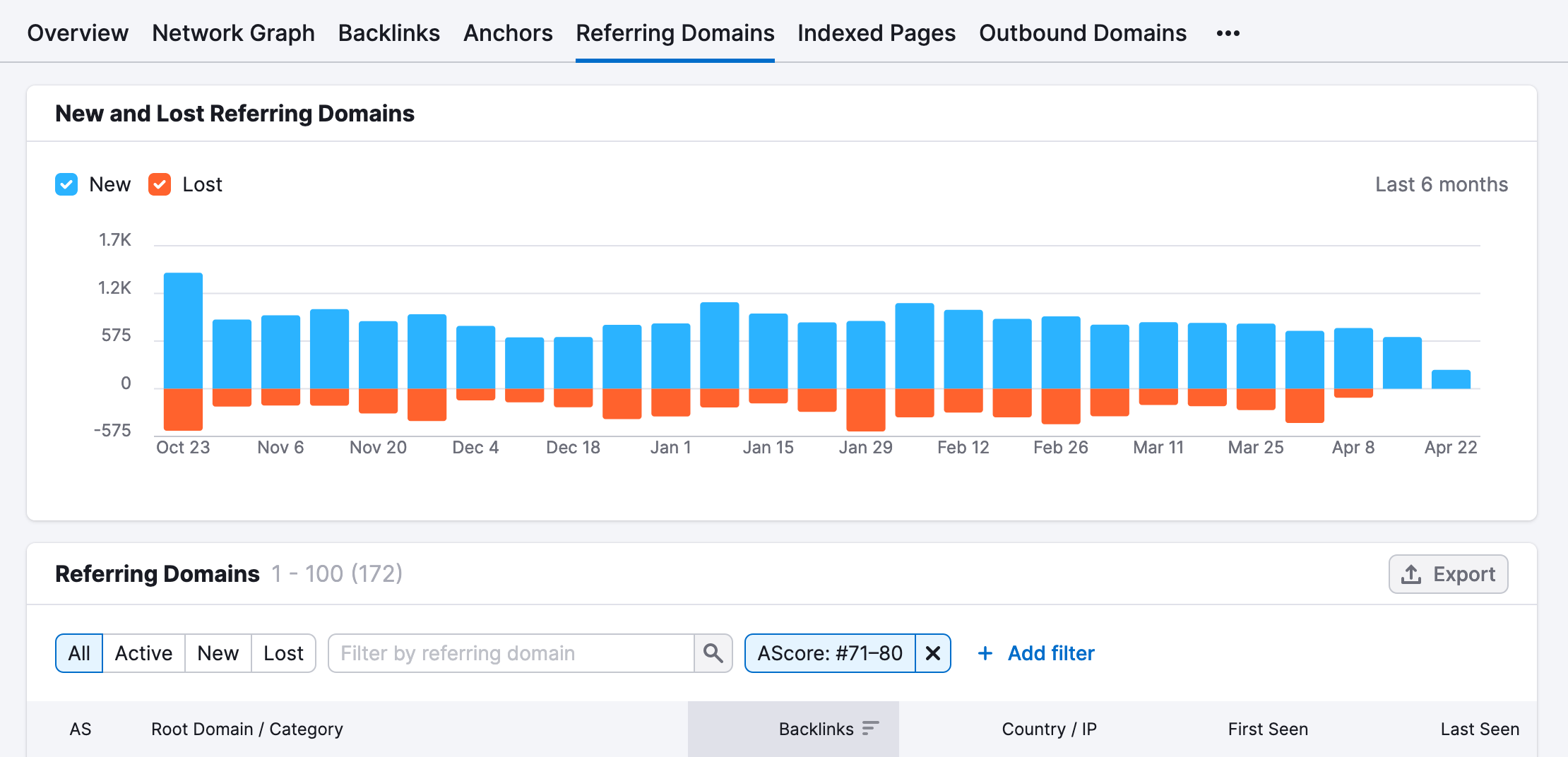

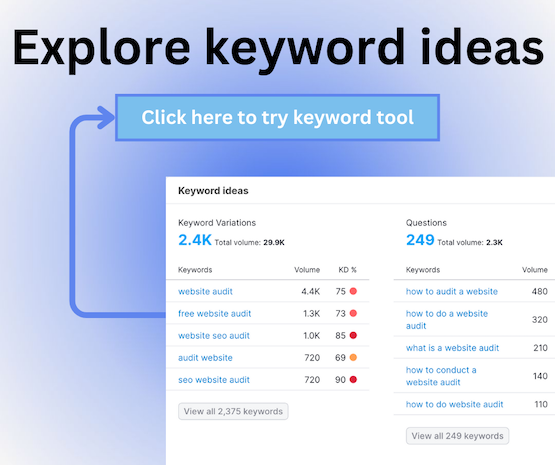
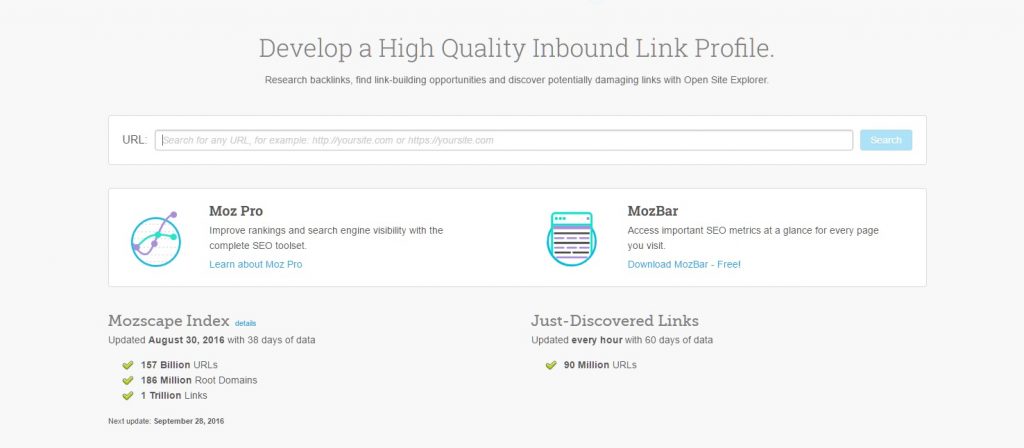
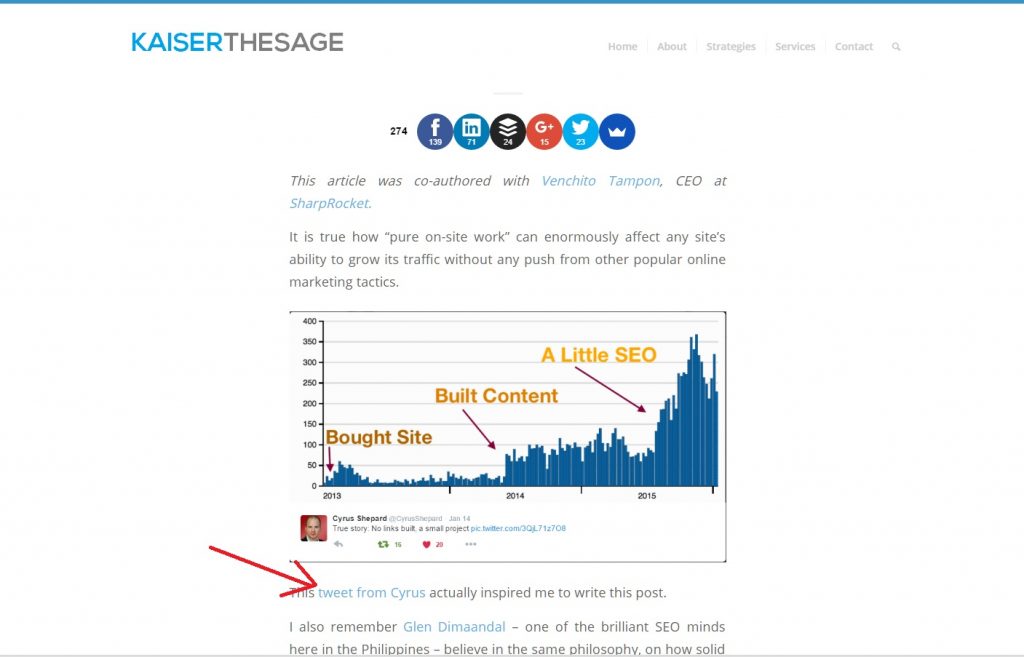
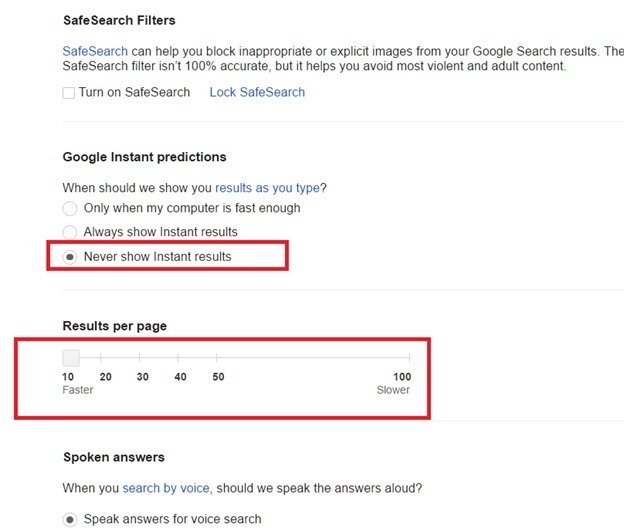

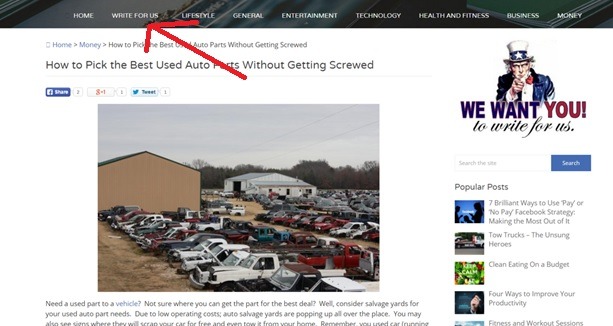
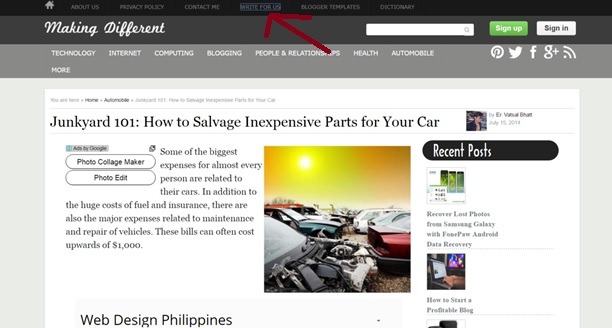
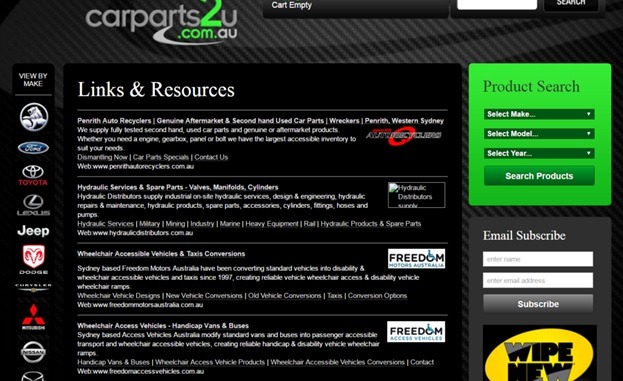
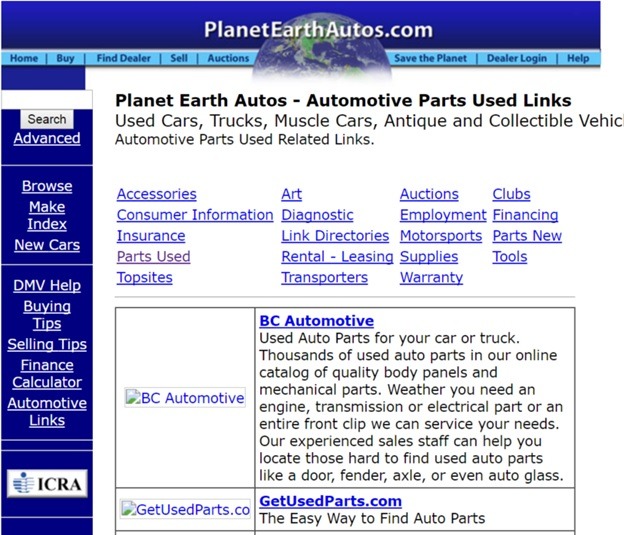
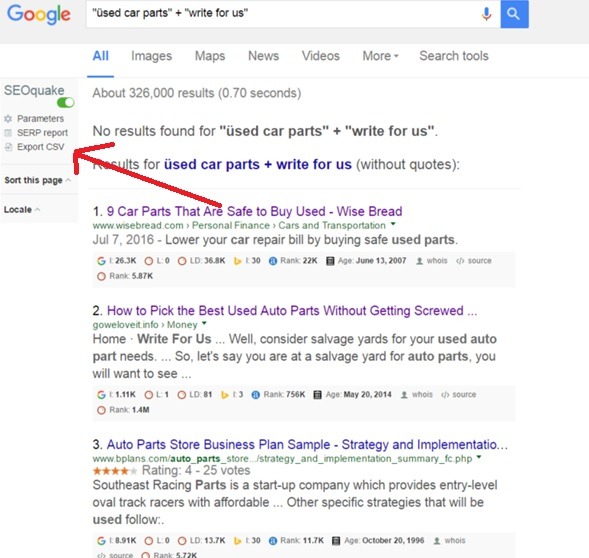
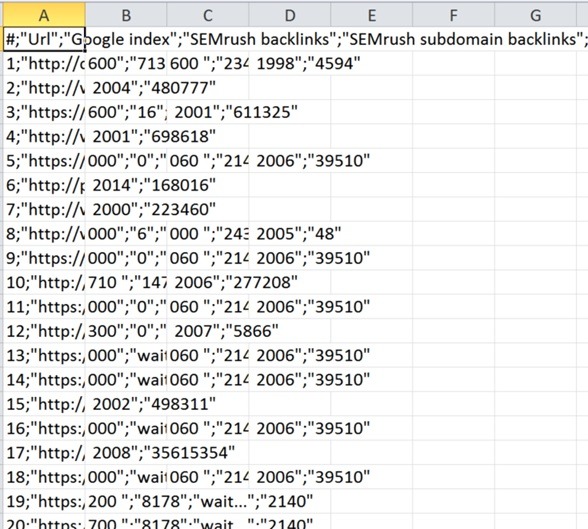
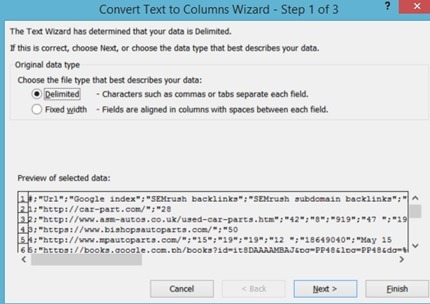
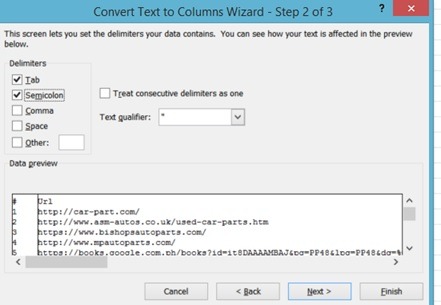
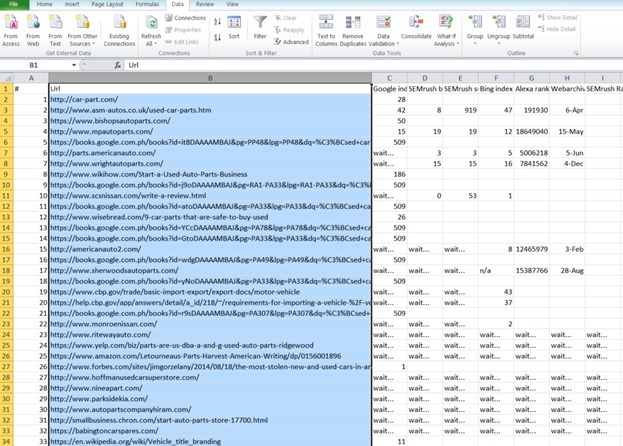









Hey David, I have just been re-launched my blog and I’m sure 8 ways you share above about how to get backlinks is the ways that I must do. Ok, Why don’t you list guest blogging or blog commenting on your list above? I thinks there are the best and free ways to get backlinks to your site too. Right?
Most blogs have the “no follow” code in their comments, so the bots don’t follow them to your website.
There are so many great reasons to comment. If you continously write comments that give value to the readers, you’ll be noticed. And maybe they’ll even check out your website! It’s a win win 🙂
Thanks for the great post on building backlinks David!
I especially love your tip about making use of press releases – I haven’t really used it myself but I know someone who was able to get on Yahoo using PRWeb. I think its all about having the right press releases and you can easily get tons of backlinks.
A great tactic I think you didn’t mention, though, is guest blogging. It can be a really great way to generate quality backlinks as most sites are more reputable and specific when compared to article directories.
Hey Onibalusi and David
Another great feature of PR’s is that they can go viral in no time. That is if the news is of any value or presented in a way that makes it look valuable 😉
And you don’t have to spin them or change them since unique content is not an issue with Press Releases as opposed to article marketing.
I actually ranked a site of a friend in Austria No 1. using Press Releases alone.
Also I agree with Onibalusi on guest posting. However you have to be a dedicated scribe to do so successfully.
Btw, big kudos on your blog Oni, great style and proof that perseverance pays off.
David, did I mention I liked the post? I liked it. Now off to bed 😉
i do love the award points..i still remember the first i start blogging (after moving from blogspot to wp), i ran a simple contest and my blog and gave away some money to the winner…and now my blog is about 10months and got pr 2 🙂
i also do prefer testimonial 🙂
Yea I use Social Monkee. That site is pretty cool. Never heard about PRweb. I’ll definitely check that site out.
Google has dropped a few of those article marketing sites during there panda update. And I think they reason those sites hold less weight is because people use those automated tools and push there sites up to the front page. I’m sure it still works though.
I noticed that Michael Dunlop moved ahead of John Chow for the phase “make money online” Hah..that’s interesting.
Article marketing is definitely NOT dead. I use it as a primary method for my low to medium competition keywords, and believe me when i say it really works. What i should do more though, is link baits.
Cool, I think I will try that product out. I wrote an article before manually, and I cant imagine doing that all day.
Social Monkee is good though.
Since my blog and site are focused on a specific group of people that not everyone is comfortable with, I’m careful about how I promote. I don’t like the idea of using a site like Social Monkee that’s pushing my links out to 25 unknown social bookmarking sites on a daily basis. There are a lot of trolls out there that might use those links as an invitation for flaming and comment spam. I’d need a lot more information about Social Monkee and how it really works than a visit to their site gave me.
I do use an RSS feed process and that has lead me to get some visitors on a daily basis but it seems to run 50-50 between legitimate visitors and those that just want to leave comment spam.
I think I’ve gotten the most value out of Link Bait. I need to take those types of articles one step further by tweeting them out to a more targeted Twitter network. Unfortunately, the network I’ve built was from my IT recruiting days and now I’m in a completely different arena with my blog. I’m working on building a whole new following.
Just WOW!! Thanks Michael and David, I think you guys open my eyes more and more with every article you provide to us simple mortals 🙂
Just with this article, I think I’ll be implementing in my blog at least 4 of those 8 tips you gave
though, my blog is in spanish, so I hope submitting my articles to all those engines will work somehow
cheers!
Great resources for most bloggers. I never thought about all these ways to build backlinks. Certainly an eve opener and good education. Thank you for sharing such vital information.
Like the press release strategy, as it serves as a great method to ramp up on quality backlinks in a fairly short period of time. Awards are definitely on point along with contests as well, and of course you can
never go wrong with “the usual suspects” like good ole’ article marketing which is a time consuming BEAST but still holds weight in this online game……
Great post! I definitely have to look more into press releases and PRweb.
Linkbait does work great for me as well as article marketing.
But you do have to remember that it’s a combination of all these methods and more that will give you a lot more juice. Not just focusing on one.
Hey guys,
So this is by no means a definitive list of ways to get backlinks — we just wanted to give 8 easy ones. Guest posting could be a whole other blog post entirely…so maybe that will be my next one 🙂
And just to clarify, I love guest blogging… as you can tell by the amount of posts I have here 🙂
David
Hi David,
So article marketing and press releases are still working well for backlinks even after the Panda update?
Article marketing works better after Panda- if you’re doing it right.
Articles that are at least 700 words do a lot better. Post it to your own site first, then get it indexed, then submit to ezine- when ezine accepts it, then put it on all the other directories.
You can take your article in .doc format and submit it to a ton of document-sharing sites as well.
Ah, sounds like a good strategy. Might be a good thing to do with the articles in my archives as most of mine are 900+. Thanks!
Great tips Michael. some of the things you stated are totally new to me when it comes to building backlinks. For instance, I have not been utilizing testimonial and awards. I think it’s nice to look into it. You made it clear and I’m grateful
great tips about seo
keep posting bro
Wow! Great information. Thanks for sharing the software that you use.
Great Post David,
I found Social Monkey interesting. I have signed up to it now. Will start using it and hope I get some good results from it. I am also starting out with guest posts. I think it is an awesome way to build traffic and links to our blogs.
Article marketing definitely works. Like the other David, we have a bunch of sites that rank just from article marketing. The key though is BULK submissions — I’m talking thousands of them. We use Article Marketing Robot for this.
Really good article. I always learn something when I visit your blog. Thanks! 🙂
Backlinks indicate the reputation of certain website so it is really important to learn ways to earn it. Thanks for sharing your thoughts.
I agree that article marketing is a good method. I don’t mass submit but I have still seen good results with it.
If you’re time poor then I’d say spend most of your time doing this. And while you should submit to the high page rank and established directories, of course, there are also lots of others that are a notch below that are also worthwhile. Having a variety of sites you’re linking back from seems to help as well.
Like social monkee. Trying it out now.
I found that Press Releases is the most effective way to create high quality backlinks and targeted visitors. It will cost you a few hundred dollars but it is worth is.
Agree, Social Monkee is a good tip. Panda has had an impact on Article Marketing, regularly pumping articles to low value sites will not help your website rankings.
Neat article though.
Wonderful content Michael! Social Monkee is working really well on me now.. Thanks for the reccomendation.. 🙂
definitely a great post. I should try rss directories like feedagg i think it definitely helps. Having good backliks for good traffic is a must.
Great post David and thank you for reminding me about Press Releases.
This is definitely an excellent post. I haven’t tried Social Bookmarks yet. It’s a must to try.
Guest blogging – I rather like this approach. Given that it is an undending job trying to find content for blogs, this seems a novel method for keeping on top of the task. The blog owner gets content and the contributor gets backlinks. A win-win situation.
As always, another excellent post with informative advice. My personal favorite here is the social bookmarking and link bait. These two are great for your self confidence as to see people post comments or tweet/follow/like what you’ve written is a real boost.
SEO really is that never ending struggle to reach the top isn’t it.
Keep up the good work,
Gary
David
I like what you had to say about testimonials.
Your site has been a terrific resource for me.
Keep up your good work.
Hey David & Michael,
Do you guys ever recommend buying backlinks? If so, can you guys do an article of companies to use? I am always afraid the hired company is going to ruin our image with bad/inappropriate backlinks, as well as, the company getting my url put on a permanent spam list.
-Brendan
What about free press release sites do they aso work??
Great read good info about getting back links to a website.
This is definitely an excellent post. I haven’t tried Social Bookmarks yet. It’s a must to try. Thanks for sharing..
http://www.gikoberry.com
Great article and tips! Backlink building is really very important. Thanks!
I was looking for the best articles on proper back link making and today I found that. Great and to the point talk , that is the best aspect of your post
This is very useful tricks for beginner, but I think guest
posting or contribute other related blogs is still a great way to build
backlinks and become sponsor to the beginner related site can help a thousand
time. Thanks for your valuable opinion.